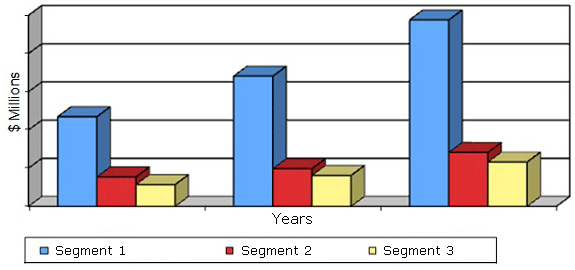BCC Research Publishes New Report On United States Fracking Fluids Market
February 12, 2014
Wellesley, Mass., February 12, 2014 – According to a new technical market research report The U.S. market for Fracking Fluids ,from BCC Research (www.bccresearch.com), the U.S. market for fracking fluids was valued at $18.4 billion in 2012 and $26 billion for 2013. BCC Research projects the market to grow to nearly $37.3 billion by 2018, and register a five-year compound annual growth rate of 7.4% from 2013 to 2018.
Hydraulic fracturing, the process for fracturing underground rock formations with a mixture of pressurized water, propping agents and chemical additives to release petroleum or natural gas for extraction, has changed the global energy landscape for the world and in particular the U.S. The process, which relies on fracking fluids, has enabled the shale gas and tight oil segments to become the fastest growing in the United States.
The market for fracking fluid varies considerably based on geographic region. The fastest growth rate over the next five years will occur in the Northeast region. The region predominantly produces natural gas from the Marcellus Shale, located underneath Maryland, New York, Ohio, Pennsylvania, Virginia, and West Virginia and also from the Antrim Shale, underneath the state of Michigan.
The target fuel type for harvest strongly influences the fracking fluid market. Harvesting shale oil through hydrofracking uses approximately 10 times more fracking fluid than harvesting shale gas. Specifically, the shale oil process consumes 10.1 gallons of water per 1 million British Thermal Units (MMBtu) versus 1.2 gal of water per MMBtu for the shale gas process. Thus, though there is a much greater amount of technically recoverable resources (TRR) for gas shales, the market for fracking fluid in the oil shale regions is just as attractive.
The greatest external market drivers for fracking fluids include the activities of the well operators and oil services companies, and both not only drive the discovery of new shales, but also influence the type of hydrofracking technology implemented to maximize extraction. Other factors that strongly influence demand include the technological progress of water treatment and recycling of fracking fluids, and the establishment of new water supply channels and substitutes for water during the fracking process. Heightened social awareness concerning hydrofracking and greater scrutiny by the Environmental Protection Agency will also strongly influence the fracking fluid market.
This study provides a comprehensive overview of the fracking fluids market in the U.S., including the hydraulic fracturing technologies most widely used, and the amount and type of production, and presents market forecasts over the next five-year period (2013 to 2018) for each major component and the specific additives in use.

The research covers the market drivers propelling the growth of the fracking fluid industry, the industry structure, trends, and the company profiles of the major production operators and fracking fluid suppliers for the U.S. domestic market. Extensive analysis of the production from each type of hydraulic fracturing technology supports the estimated production growth rates for the specific fracking fluids presented.
Overall, this study applies to the energy production and chemical manufacturing industry sectors. The most relevant target audience within these sectors includes executives in the oil, gas and chemical engineering and supply sectors, directors, strategic planners, and sales and marketing managers.
The U.S. Market for Fracking Fluids( EGY121A )
Publish Date: Feb 2014
Data and analysis extracted from this press release must be accompanied by a statement identifying BCC Research LLC as the source and publisher. For media inquiries, email press@bccresearch.com or visit www.bccresearch.com/media to request access to our library of market research.
BCC Library Membership Benefits
Unlimited Access to Market Research Reports for Academic Institutions and Corporations.
Custom Research
Tailored solutions across industries for your unique business needs.
More in Energy
- Global Floating Offshore Wind Energy Market Expected to Surge with 60.1% CAGR by 2030
- White Hydrogen Takes the Spotlight as a New Clean Energy Powerhouse
- MENA Renewable Energy Market to Reach $59.9 Billion by 2030, Driving a Regional Green Energy Boom
- Electrical Switches Market Set for Strong Global Growth as Smart and Traditional Technologies Evolve
- Sustainable Energy Markets Forecast Strong Growth Through 2029
Reports from Energy
Recent News
- Hydrogen Pipeline Market to Grow at 19.3% CAGR by 2030
- Recycled Wood Finds Its Place: A Sustainable Shift in Global Markets
- Residential Energy Storage and Blockchain Energy Sharing to Grow 16.4% Annually Through 2030
- EV Battery Testing Market to Grow at 18.4% CAGR Through 2030
- Global Vehicle-to-Grid Market Expected to Grow at a CAGR of 21.7%
